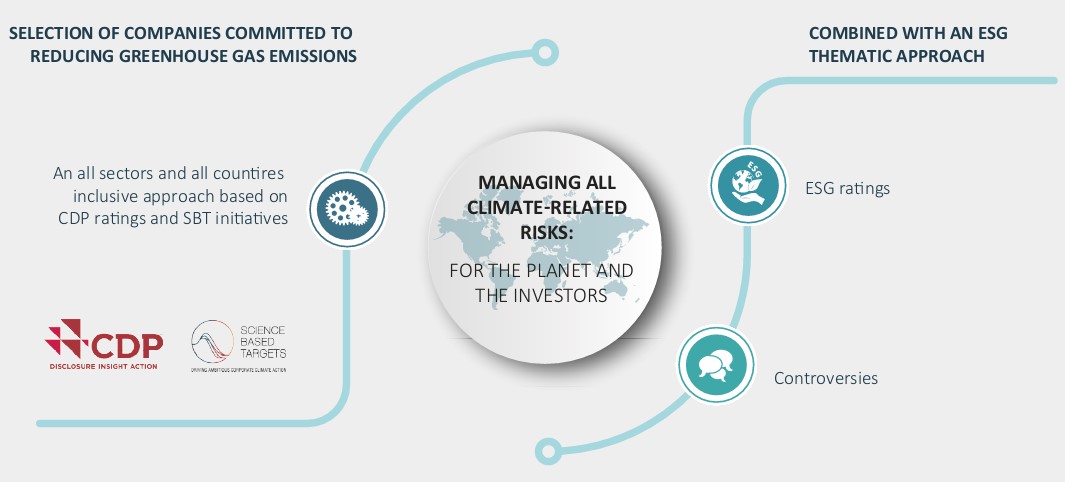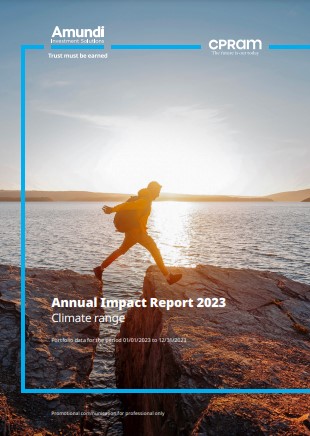Climate transition
Taking action on the climate helps safeguard our future and is now an urgent priority. Investors have a role to play alongside governments, NGOs, companies and ordinary citizens.

Why invest in the climate transition?
The Earth’s temperature is rising at an unprecedented pace. Reversing, pure and simple, the climate changes that have begun already looks out of reach.
The current environmental challenge is therefore to attenuate the impact of these changes through a policy of drastic reduction in greenhouse gas (GHG) emissions in order to maintain a climate that, yes, is warmer, but liveable and that causes no additional harm to human life and biodiversity.
Taking action on the climate is therefore a priority challenge for the coming years. This is why the United Nations made this one of its Sustainable Development Goals for 2030. The Paris Agreement, signed within an UN framework, puts forth the goal of capping the global increase in temperatures at 2°C above pre-industrial levels and to make efforts to cap this level even lower, at 1.5°C.
While the urgency of such environmental action has brought forth a response from the international community, it is companies, which are the cause of most GHGs produced from fossil fuels and manufacturing processes, that are on the front lines of combatting climate change.

Investing also means taking action
A broad universe combined with a sustainable approach

Our approach
With the launch in 2018 of our first climate strategy in partnership with CDP, CPRAM proposed its first solution to address the challenge of the transition to a net zero emissions economy. Since then, we have developed a complete range of “transition” solutions adapted to each risk profile and investment needs: global or eurozone equities, rates, diversified.
Our investment philosophy is the same for our entire climate transition range – to select those companies that are best positioned in their emissions-reduction trajectory, regardless of their sector or geographical region; to, ourselves, adhere to an approach for reducing our portfolios’ carbon intensity; and to offset their carbon footprint through carefully selected projects.
The management teams rely directly on the universe of CDP-rated companies and, within this universe, select those with the most virtuous practices in meeting climate ambitions. This evaluation is supplemented by the Science Based Targets (SBT) objectives.
This approach helps put some distance with the usual investment universe, which reflects the major benchmark indices, and provides a real source of diversification. In addition, the management team may devote 10% of the fund to companies not CDP-rated if their activities are directly connected to the climate transition, such as companies in the renewable energy value chain.
The Group’s norms-based and sector-based exclusion policy is then applied, along with the ESG and controversy filters that are specific to CPRAM’s responsible approach.
The main risks incurred by this strategy are the risk of loss of capital, equity risk, interest-rate risk, credit risk, and exchange rate risk. To find out more about the fund’s risk profile, please refer to its legal documentation.
Annual impact report
Discover our latest climate range impact report
With the aim of transparency and in order to make responsible investment ever more concrete, we publish an annual impact report.
